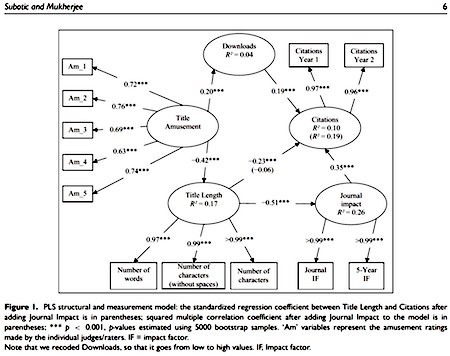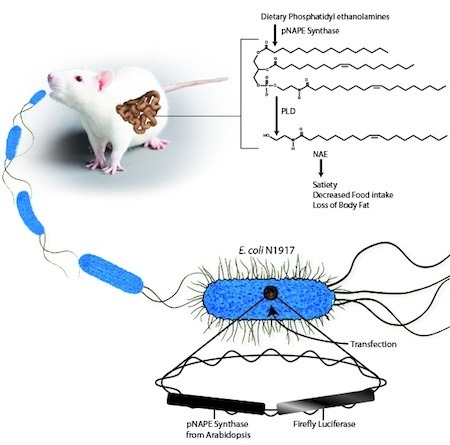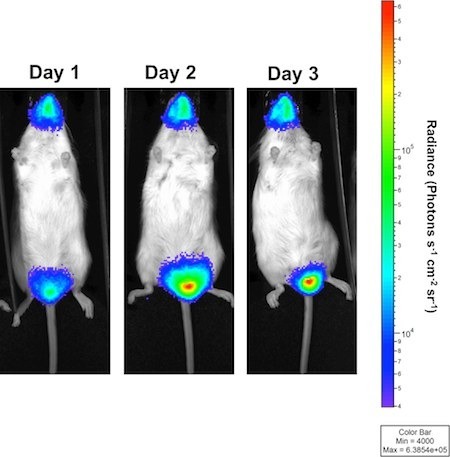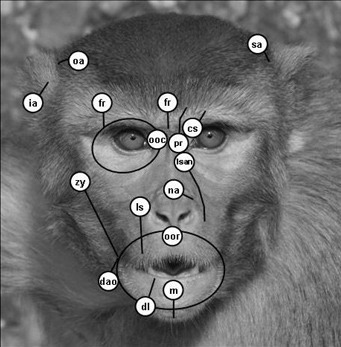Marc Abrahams's Blog, page 446
November 22, 2013
Story of a cute robot
The story of Boxie, the designed-to-be-cute, wandering, info-gathering robot at MIT:
Perhaps Boxie will come to the Ig Informal Lectures at MIT, perhaps….
BONUS: A not-so-cute robot at MIT

Short, Amusing, and Not Necessarily Cited
Information shines forth from this study:
“Short and amusing: The relationship between title characteristics, downloads, and citations in psychology articles,” Sinisa Subotic and Bhaskar Mukherjee, Journal of Information Science, November 21, 2013. (Thank to investigator Charles Oppenheim for bringing this to our attention.) The authors, at NGO ‘Persona’, Bosnia and Herzegovina and ‘CEON/CEES’, Serbia and Guru Ghasidas University, India, explain:
“The aim of this study was to conduct a unified investigation of various, previously mostly individually studied scientific article title characteristics, like: title length, type, amusement and pleasantness, and specific title ‘markers’ (e.g. colons, attention-grabbing words etc.)… While these findings are limited to the psychology discipline only, our results suggest that the integrative structural approach is promising and that more research following this paradigm is needed.”
Here’s detail from the study:


Adding a Wink to the Facial Actions Coding System
Ekman isolated the wink, you see.
In 1976 the Facial Actions Coding System [FACS] was developed by Paul Ekman and colleague Wallace V. Friesen. It featured in their paper for the inaugural issue of Environmental Psychology and Nonverbal Behavior, 1(1), pp. 56-75, which was entitled ‘Measuring Facial Movement’. The Facial Action Code was derived from an analysis of the anatomical basis of facial movement – and described a comprehensive set of ‘Action Units’ which can, it’s said, be used to describe any facial movement in humans.
Here, for example, is Action Unit 46 – The Wink (video here in .mpg format)
But, in the last 37 years or so, the concept has been taken several steps forward – in that it’s no longer restricted to humans. See (for example):
• GibbonFACS and
• MaqFACS from which the picture above is taken.
BONUS: Quite a few of Professor Ekman’s peers are less than enthralled with the professor’s work.
BONUS: Video of Ekman’s code M59, the nod:
BONUS (possibly unrelated): Huh?

November 21, 2013
The experiment where they purposely made poop glow in the dark
Investigator Kirk Maxey introduced us to this research by saying: “For those with fetishes, we can add multi-colors….”
He gives details, including the image reproduced here, on his blog, which begins thus:
Lose Weight…and your poop will glow in the dark too!
Sean Davies had a problem to solve: If you genetically modify enteric bacteria to make them more healthful, how can you quickly check to see if they’re happily growing away inside your experimental rat? The solution he chose could represent the pinnacle of scientific achievement in its own right – he incorporatedbioluminescence into the same bacteria. Those rats that were successfully colonized by the modified E. coli could be detected at a glance – because their poop now glowed in the dark….

BONUS: “The paper where I accidentally made genitalia glow in the dark”

“The paper where I accidentally made genitalia glow in the dark”
 The lead author introduced this study to us by saying: ”Here is the paper where I accidentally made genitalia glow in the dark.”
The lead author introduced this study to us by saying: ”Here is the paper where I accidentally made genitalia glow in the dark.”
The study is:
“Non-Invasive Monitoring of Streptococcus pyogenes Vaccine Efficacy Using Biophotonic Imaging,” Faraz M. Alam [pictured here], Colin Bateman, Claire E. Turner, Siouxsie Wiles, Shiranee Sriskandan, PLoS ONE, 8(11), 2013 e82123.
The paper itself says:
“During experiments, bioluminescent S. pyogenes produced an unexpected signal from the genitalia of some mice, corresponding to infection of the lower vaginal tract, suggesting direct inoculation through grooming or airborne transmission within the cage (Figure S1). This underlines the potential for bacteria used in animal experiments to be transmitted beyond the intended site of infection and demonstrates the ability of BPI to identify niches of infection that were not previously suspected.”

BONUS: The experiment where they purposely made poop glow in the dark

Announcement of a Finger-Length-Ratio/Video-Game-Addiction Connection
Evidence of one sort or another piles deep, deep, deep for or against there being significance to the length of a person’s second finger as compared with the length of that person’s fourth finger. Now implicated in the ever-more-encompassing story: video game addiction. Here’s a new (and perhaps the only) study on this particular vexing question:
“Low 2D:4D Values Are Associated with Video Game Addiction,” Johannes Kornhuber [pictured here, fingers not shown], Eva-Maria Zenses, Bernd Lenz, Christina Stoessel, Polyxeni Bouna-Pyrrou, Florian Rehbein, Sören Kliem, Thomas Mößle, PLoS One. 2013 Nov 13;8(11):e79539. The authors, at Friedrich-Alexander-University of Erlangen-Nuremberg, and at Criminological Research Institute of Lower Saxony, Hanover, German, explain:.
“Here, we quantified video gaming behavior in young males. We found lower mean 2D:4D [second digit to fourth digit ratio] values in subjects who were classified… as having at-risk/addicted behavior (n = 27) compared with individuals with unproblematic video gaming behavior (n = 27). Thus… low 2D:4D values, are associated with problematic video gaming behavior. These results may be used to improve the diagnosis, prediction, and prevention of video game addiction.”
BONUS: Baroness Susan Greenfield warns the world about video game addiction.
BONUS: Ben Goldacre warns the world about Baroness Susan Greenfield.
BONUS: Finger celebrities.

“Moi, professeur B., lauréat du prix Ig Nobel”
Laurent Bègue‘s first-person account, in the magazine Cerveau & Psycho, about what happened when he became an Ig Nobel Prize winner:
Moi, professeur B., lauréat du prix Ig Nobel
Laurent Bègue, professeur de psychologie sociale à Grenoble, a vu ses travaux récompensés par un prix Ig Nobel. Ces prix distinguent les recherches les plus insolites, qui font d’abord rire, puis réfléchir
Le message que j’ai trouvé dans ma boîte électronique, le 14 avril 2013, était plus énigmatique que la plupart de ceux que je reçois d’habitude. Pourtant, en tant qu’enseignant-chercheur à l’université, les courriels qui me sont adressés sont parfois inattendus ou sibyllins (comme savent l’être les étudiants, sans parler de certains collègues), mais celui-ci l’était particulièrement : « Pourrions-nous avoir une conversation strictement confidentielle…

The position of the Scotch egg in modern physics
This study was one of the first to explicitly introduce the concept of the “Scotch egg” into modern physics research. Scotch eggs are a foodstuff of sorts (with a history that is in some dispute). The study:
“The crystal structures of the elements: pseudopotential theory revisited,” J Hafner and Volker Heine [pictured here], Journal of Physics F: Metal Physics, 1983, Vol.13(12), pp. 2479-2501. The authors, at Technische Universitat Wien, Austria and the University of Cambridge, UK, report:
“…we find that the relation [defined in this paper] holds fairly well over a wide range of electron densities. Incidentally, this substantiates the ‘scotch-egg’ model of HW [Volker Heine and D. Weaire]… At constant Rc, and variable Rs, the repulsive core expands with Rs1/2 (equation (2.4)) while Rmin remains constant-the core moves over the attractive wiggle with decreasing electron density (increasing screening length). This is just the ‘scotch-egg’ behaviour.”
Here’s detail from the study:
BONUS: The song “Scotch Egg”, performed by Mr. Weebl:
BONUS: Instructables’ instructions for How to Make a Scotch Egg. Alternatively: the BBC’s instructions. Further alternatively, this video shows, laconically, the Nicko’s Kitchen method:

November 20, 2013
“Exposure to Fast Food Impedes Happiness”
This study is packed with tasty subtleties and interconnectivities:
 “Too Impatient to Smell the Roses: Exposure to Fast Food Impedes Happiness,” Julian House [pictured below], Sanford E. DeVoe, and Chen-Bo Zhong [who rose to fame with his study about the MacBeth Effect — see yesterday's blog item about that; he is pictured here, at right], Social Psychological and Personality Science, epub 2013. The authors, at the University of Toronto, explain:
“Too Impatient to Smell the Roses: Exposure to Fast Food Impedes Happiness,” Julian House [pictured below], Sanford E. DeVoe, and Chen-Bo Zhong [who rose to fame with his study about the MacBeth Effect — see yesterday's blog item about that; he is pictured here, at right], Social Psychological and Personality Science, epub 2013. The authors, at the University of Toronto, explain:
We tested whether exposure to the ultimate symbols of an impatience culture—fast food—undermines people’s ability to experience happiness from savoring pleasurable experiences.
Study 1 found that the concentration of fast-food restaurants in individuals’ neighborhoods predicted their tendencies to savor.
Study 2 revealed that exposure to fast-food primes impeded participants’ ability to derive happiness from pictures of natural beauty.
Study 3 showed that priming fast food undermined positive emotional responses to a beautiful melody by inducing greater impatience, measured by both subjective perception of time passage and self-reports of impatience experienced during the music.
(Thanks to investigator Erwin Kompanje for bringing this to our attention.)
The authors produced a companion study:
“Fast food and financial impatience: A socio-ecological approach,” Sanford E. DeVoe, Julian House, and Chen-Bo Zhong, Journal of Personality and Social Psychology, 105; 2013, pp. 476-494.
BONUS: Toronto Mayor Rob Ford:

Conclusion: Nuts
Comes a further advance in the biomedical sciences. Here are the conclusions reported in a study published a few days ago:
CONCLUSIONSIn two large, independent cohorts of nurses and other health professionals, the frequency of nut consumption was inversely associated with total and cause-specific mortality, independently of other predictors of death. (Funded by the National Institutes of Health and the International Tree Nut Council Nutrition Research and Education Foundation.)
This is the study:
“Association of Nut Consumption with Total and Cause-Specific Mortality,” Ying Bao, M.D., Sc.D., Jiali Han, Ph.D., Frank B. Hu, M.D., Ph.D., Edward L. Giovannucci, M.D., Sc.D., Meir J. Stampfer, M.D., Dr.P.H., Walter C. Willett, M.D., Dr.P.H., and , M.D., M.P.H., New England Journal of Medicine, 2013; 369:2001-2011.
This, in its own words, is the International Tree Nut Council Nutrition Research and Education Foundation, which co-funded the study:
The International Tree Nut Council Nutrition Research & Education Foundation (INC NREF), a nonprofit organization, represents nine tree nut industries (almonds, Brazils, cashews, hazelnuts, macadamias, pecans, pine nuts, pistachios and walnuts) and supports nutrition research and education.
For inquiries on a specific nut group, click here.
An associated press release says: “Research also shows people who eat nuts weigh less“, a question that Dr. Fuchs spelunks in great speculative detail in this video:
Another press release carries the doubly-linked headline “International Tree Nut Council funded study links nut consumption to reduced death rate“.

Marc Abrahams's Blog
- Marc Abrahams's profile
- 14 followers






